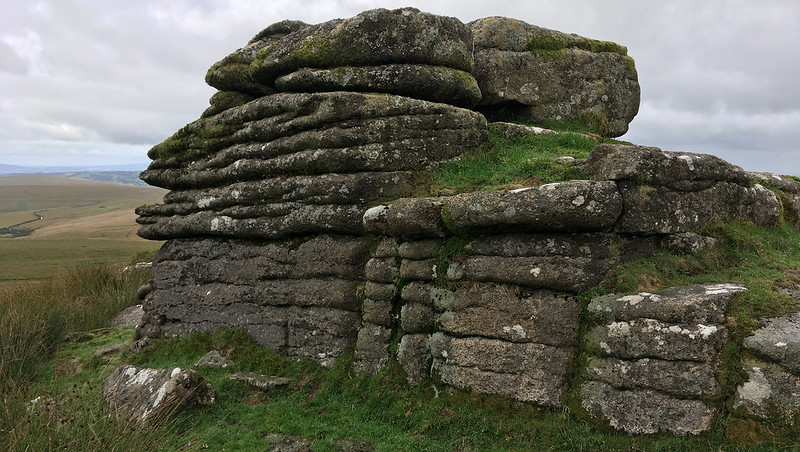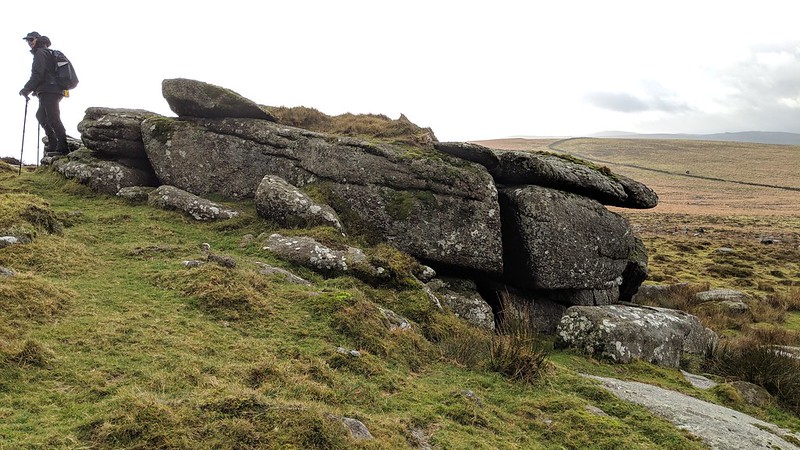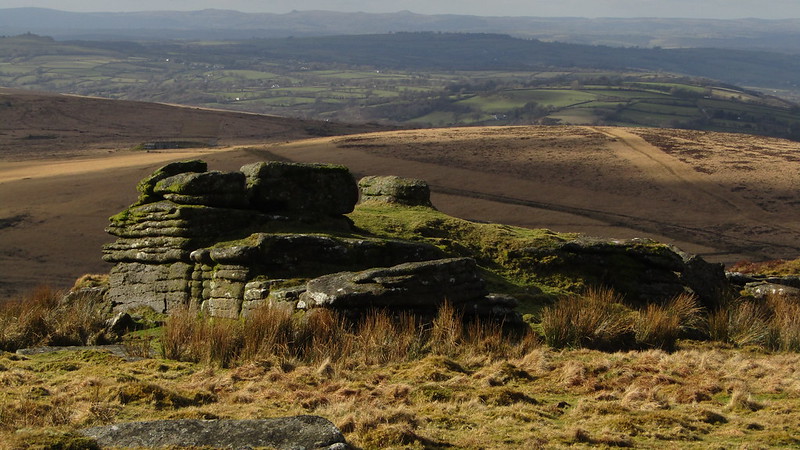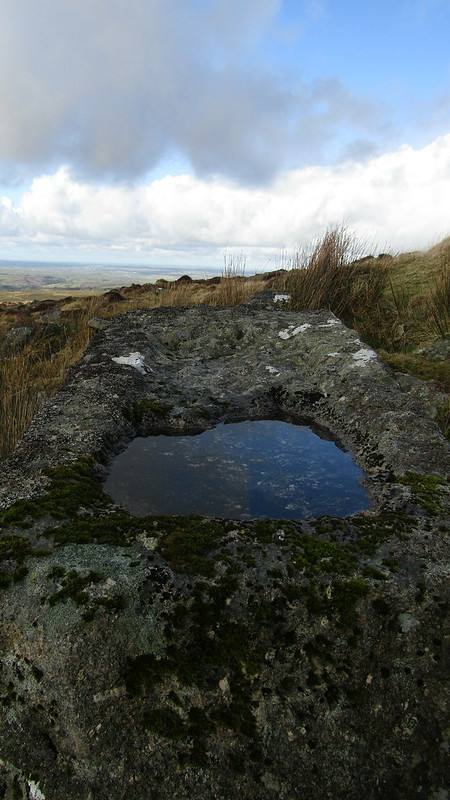TORS OF DARTMOOR
a database of both lesser- & well-known rocks and outcrops
Little Hare TorLittle Hay Tor
 Little Hare Tor is a fine granite tor completely dominated by the grand Hare Tor to the east. However, this small tor (of two outcrops) still attains interest including repetitive horizontal jointing in the granite.  It is described, in High Dartmoor; "The tor heads a low, westerly ridge terminating at Little Hare Tor (1,500 feet). Its higher part is a cohesive pile, but its weathered lower pile contains many narrow frost-partings. Principal views are of Lyd country, but the tor also overlooks the head and greater course of Willsworthy Brook..."  The tor is also called 'Little Hay Tor' which, according to Crossing, likely derived from 'High' or 'Higher' being that it is lower than its higher neighbour to the east. The lower pile forming a cohesive group of split rocks stands above a large oblong part cut trough. Its upper surface has been crudely carved but the angle of the trough means that rain water is regularly trapped in its lower lip. 
| ||||||||||||||||||||||||||||